



Having essential knowledge is the first step to a speedy recovery. Dr Cheong Lai Leng, an experienced and Ministry of Health-registered dermatologist, discusses the three most common types of adult-related skin problems she encounters in her medical practice.
Although frequently associated with teenagers undergoing puberty, acne affects a significant number of adults too. “A study done in the US shows that 12 per cent of women and 5 per cent of men at the age of 25 years have acne,” says Dr Cheong.
Acne is mostly brought on by genes which are responsible for the increased sebum production after puberty and the build-up of skin cells that leads to clogged pores. Throw bacteria and inflammation into the mix and you have the familiar black- and whiteheads, red spots and pus-filled bumps of acne. Friction or pressure from equipment like the chin straps of helmets, lack of proper ventilation of the skin, the use of oily cosmetic products or oral medication such as oral steroids and certain anti-epileptic medication, and even exposure to heat and humidity, can aggravate the condition.
Treatments can range from regular gentle skin cleansing and topical application of acne cream/ lotion to chemical peels and oral medication. Oral antibiotics are often the first choice of therapy for people with inflamed acne.
Severely inflamed acne, acne that relapses repeatedly and acne that does not respond well to other forms of treatment may require a powerful drug called Isotretinoin. Therapy with Isotretinoin is highly effective and often improves the most severe cases of acne.
Although acne is not curable, acne sufferers eventually outgrow the disease. And, while acne may be considered a normal part of growing up, acne sufferers are known to experience negative psycho-social effects such as low self-esteem, social isolation and depression. The imperative for the early treatment of acne is thus clear.
The secondary goal of treating acne is the prevention of scarring, which is permanent and potentially disfiguring.
It is logical to draw a correlation between regular exercise and good skin, although scientific proof does not exist. There is emerging scientific evidence to suggest that diet may play an important role in the health of skin. “You can’t have healthy skin without a healthy body,” says Dr Cheong, “and the reverse is true.”
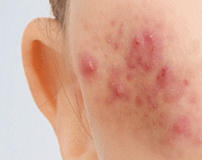
Acne
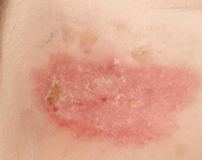
Eczema
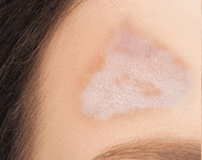
Pigmentation
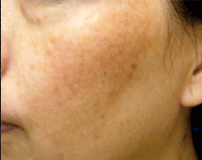
Melasma
In Singapore, about 12 per cent of 12- to 15-year-olds have eczema. But since the skin problem can arise later in life, the prevalence in adults can be expected to be higher.
“Eczema, like acne, is caused by genes. There is a ‘Hygiene hypothesis’ in medicine that says people who grew up in an overly clean environment did not have the chance to develop natural immunity to common bacteria and germs. So they have higher risks of developing allergic diseases such as eczema, hay fever and asthma,” explains Dr Cheong.
Excessive exposure to sun, water and harsh soaps, extreme climates, dust, stress, friction or pressure from wearing tight clothing, and even illnesses such as the common cold, can aggravate eczema.
Dermatologists generally recommend the use of soap-free, moisturising cleansers and moisturisers that are free from fragrance and dyes.
They may also prescribe steroid creams, or oral medication like antihistamines, to control itch. The advent of prescription steroid-free topical medication has spared many eczema sufferers from the side-effects of steroid creams. Oral antibiotics or anti-viral medication are occasionally needed. Chronic and severe eczema may require light therapy (phototherapy) or the use of powerful oral drugs that require careful monitoring.
Dr Cheong adds that it is important to seek treatment for eczema as it can lead to other health complications. “I once had a patient who waited until his entire body was covered by a rash before seeing a doctor. It could have been life-threatening as acute heart failure can develop from the severe skin inflammation. He then had to be hospitalised and closely monitored. With medical therapy, good nursing care, adequate nutrition and rest, he eventually recovered.”
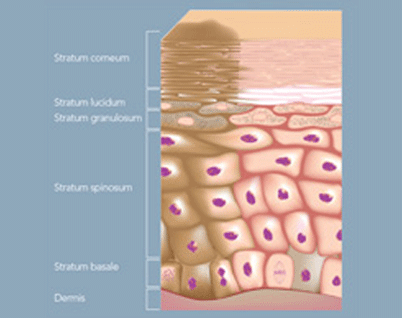
Skin Pigmentation: Diagram showing the presence of pigment in the various cellular layers of the skin.
Pigmentation manifests mainly as post-inflammatory hyperpigmentation, sun spots, age spots and melasma. They can be treated with gentle exfoliating creams or lotions, prescription lightening creams, and procedures such as chemical peeling, Intense Pulsed Light (IPL) therapy and pigment laser therapy. It is important to obtain an accurate diagnosis of the cause of the pigmentation as specific therapeutic strategies are needed to address each of the diagnoses.
Melasma is one of the most common causes of pigmentation and is often attributed to the influence of female hormones. It may appear during pregnancy or when a woman starts using oral contraceptives and may also be triggered by the use of certain cosmetics products or excessive sun-exposure.
Melasma can be challenging to treat because milder treatments may not work while strong medication or aggressive laser therapy may cause darkening of pigmentation. “Difficult cases of melasma will require the skin specialist to use a gradual escalation of therapy and careful monitoring for any adverse effects,” says Dr Cheong.